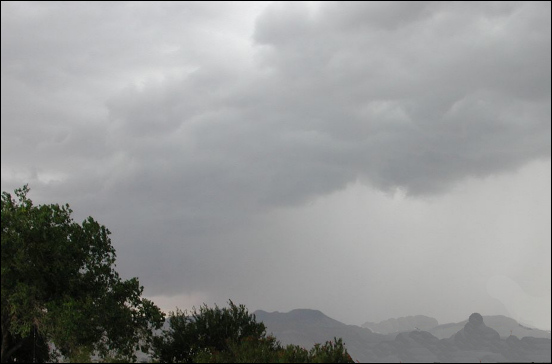

Of the many things poorly understood about climate, clouds rank close to the top. Global climatic computer models tend to use grids 100 kilometers, that's 62 miles, on a side, since smaller areas dramatically increase the computer resources needed. Much of the cloud action, though, takes place on much smaller scales and, equally confounding, changes rapidly. Clouds are so important because, depending on their characteristics, they can reflect or absorb radiation from the sun, as well as capturing outgoing heat. It's estimated that a change of only about 1% in global cloudiness could either mask or double the effect of 10 years worth of greenhouse gas emissions. Worse, global warming and pollution have the capacity to change this global cloudiness.
Two new satellites promise to give us real data on vertical
distribution of pertinent features; data that can nail down some of the uncertainties
plaguing climatic studies. Important to us? You bet. Climate is global, and our desert
climate is as vulnerable as anywhere. Pending the new data, our future is cloudy in
more than one sense.

Listen to the Audio (mp3 format) as recorded by KTEP, Public Radio for the Southwest.
Contributor: Arthur H. Harris, Laboratory for Environmental Biology, Centennial Museum, University of Texas at El Paso.
Desert Diary is a joint production of the Centennial Museum and KTEP National Public Radio at the University of Texas at El Paso.

Cloudy days are darkened by a combination of reflection from the upper portions of clouds and by absorption of the sun's radiation. Both factors affect the earth's heat balance.